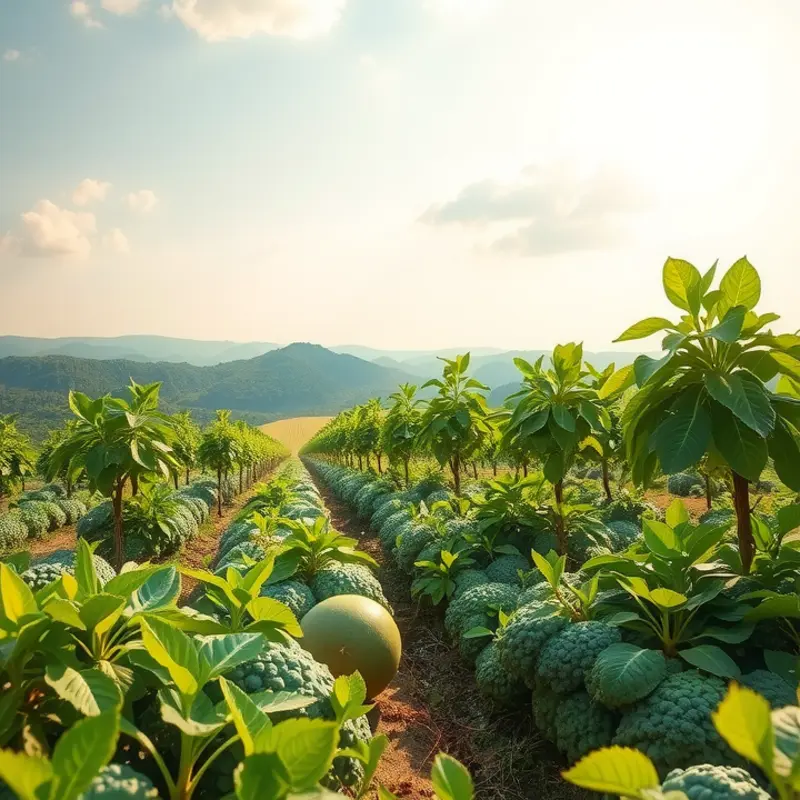Pesticide residues on produce raise valid concerns about health and safety. Consumers frequently wonder if simply washing fruits and vegetables can eliminate harmful chemical residues. Understanding the effectiveness of washing methods, the types of pesticides used, and safety practices can equip you to make informed dietary choices. From rinsing to scrubbing, let’s dive into the details.
Understanding Pesticide Residue on Produce

Pesticide residues are the trace amounts of chemicals left on or in fruits and vegetables after they have been treated during agricultural production. These residues can originate from various applications, such as insecticides, herbicides, fungicides, and other chemicals that help in pest control, weed management, and crop protection. As farmers often face challenges like pests and weeds, pesticides become an integral part of modern agriculture to ensure higher crop yield and quality.
The concern surrounding pesticide residues on produce arises due to the potential health risks linked to their consumption. Although regulatory bodies often set maximum residue limits (MRLs), there is ongoing debate about the potential long-term health impacts, especially when it comes to vulnerable populations like children and pregnant women. Concerns include potential links to various health issues, such as hormone disruption, neurological disorders, and even cancer.
Pesticides used in agriculture are diverse, with organophosphates, carbamates, and neonicotinoids among the most common types. Organophosphates, for example, are known for their effectiveness against a wide range of pests but have raised concerns due to their neurotoxic effects. Meanwhile, neonicotinoids, although used popularly to deter insects, have been scrutinized for their detrimental effects on pollinators like bees.
Understanding the magnitude of pesticide application is crucial for consumers hoping to make informed choices. While regulatory agencies monitor pesticide residues, the limitations of simple washing methods remain a critical topic. Washing fruits and vegetables with water can only do so much. Some pesticides are systemic, meaning they are absorbed within the plant’s tissues, making them impervious to surface cleaning methods. Alternative options such as peeling may help, but they can also lead to the loss of vital nutrients concentrated in the skin.
As a consumer, knowing the implications of pesticide residues is vital for better food safety. Awareness of the produce most likely to have high pesticide residues, commonly known as the “dirty dozen,” can guide more informed decisions. Opting for organic produce or local farmers’ markets may offer additional pathways to reduce exposure.
A commitment to understanding food safety and pesticide residue management can be deeply intertwined with broader lifestyle changes. For instance, adopting sustainable and eco-friendly eating habits may naturally reduce some of these risks. For more on how you can make intelligent choices in your kitchen to minimize chemical exposure, visit our page on eco-smart kitchen storage.
Ultimately, the conversation about pesticide residues on produce extends beyond simple washing. It invites us to re-evaluate our food supply chain, our consumption habits, and how we prioritize health and sustainability in our daily lives, particularly in ensuring we are not inadvertently consuming chemical remnants with our meals.
Effective Techniques for Washing Produce

To reduce pesticide residues on fruits and vegetables, employing the right washing techniques is crucial. Cold water rinsing is one of the simplest yet effective methods. It involves thoroughly rinsing produce under running water to physically remove some of the pesticide residues. While this method doesn’t eliminate all residues, it significantly reduces their presence on the produce surface.
Vinegar solutions offer a more intensive approach. Creating a solution with one part vinegar to three parts water can enhance the removal of certain pesticide residues. Soaking fruits and vegetables in this mixture for 10 to 15 minutes, followed by rinsing them thoroughly with water, is particularly useful for produce with smooth surfaces. Not only does this method help with pesticide residues, but it can also assist in removing bacterias.
When considering commercially available produce washes, it’s essential to understand their limitations. These products are designed to remove wax, agricultural chemicals, and other residues. However, studies suggest that they are not significantly more effective than a simple vinegar solution or cold water rinse. If choosing to use them, ensure you rinse thoroughly to remove any wash residue.
The decision between peeling and rinsing is another consideration when addressing pesticide residues. Peeling can be quite effective because residues often remain on the outer skins; however, it also removes nutritious fibers found in the peel. For some fruits and vegetables, thorough washing might suffice, but for others where peeling is viable and convenient, it may be a preferred method.
There are instances where opting for organic produce may be a safer alternative, particularly for vegetables and fruits with thin skins or those heavily treated with pesticides, such as berries or apples. While organic products can still have pesticide residues, they often adhere to different standards of pesticide application. Incorporating strategies like this can be part of broader efforts to ensure safe and health-conscious meal planning.
For readers interested in minimizing waste through such techniques, you may want to explore more about low-waste cooking and preparation methods that align with a sustainable and eco-friendly lifestyle.
Overall, effective washing combines practical techniques with informed decisions about when to choose organic products. This helps ensure that your fruits and vegetables are not only clean but safe for consumption.
Final words
In conclusion, while washing fruits and vegetables can help remove some pesticide residues, it is not completely foolproof. Understanding the origins of pesticides and implementing effective washing techniques are essential steps toward safer consumption. Educating yourself on when to choose organic and how to prepare your produce can significantly enhance your dietary safety. Remember, a clean kitchen starts with clean ingredients, so prioritize washing your produce thoughtfully.








